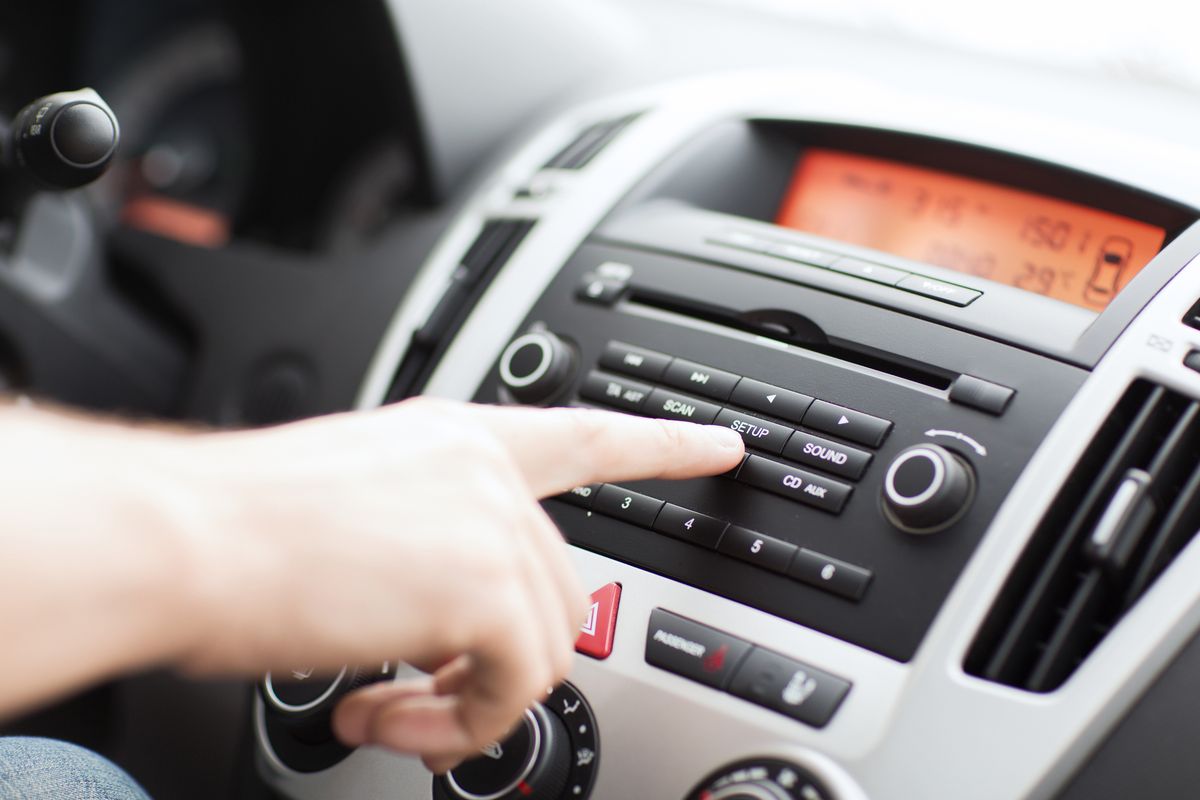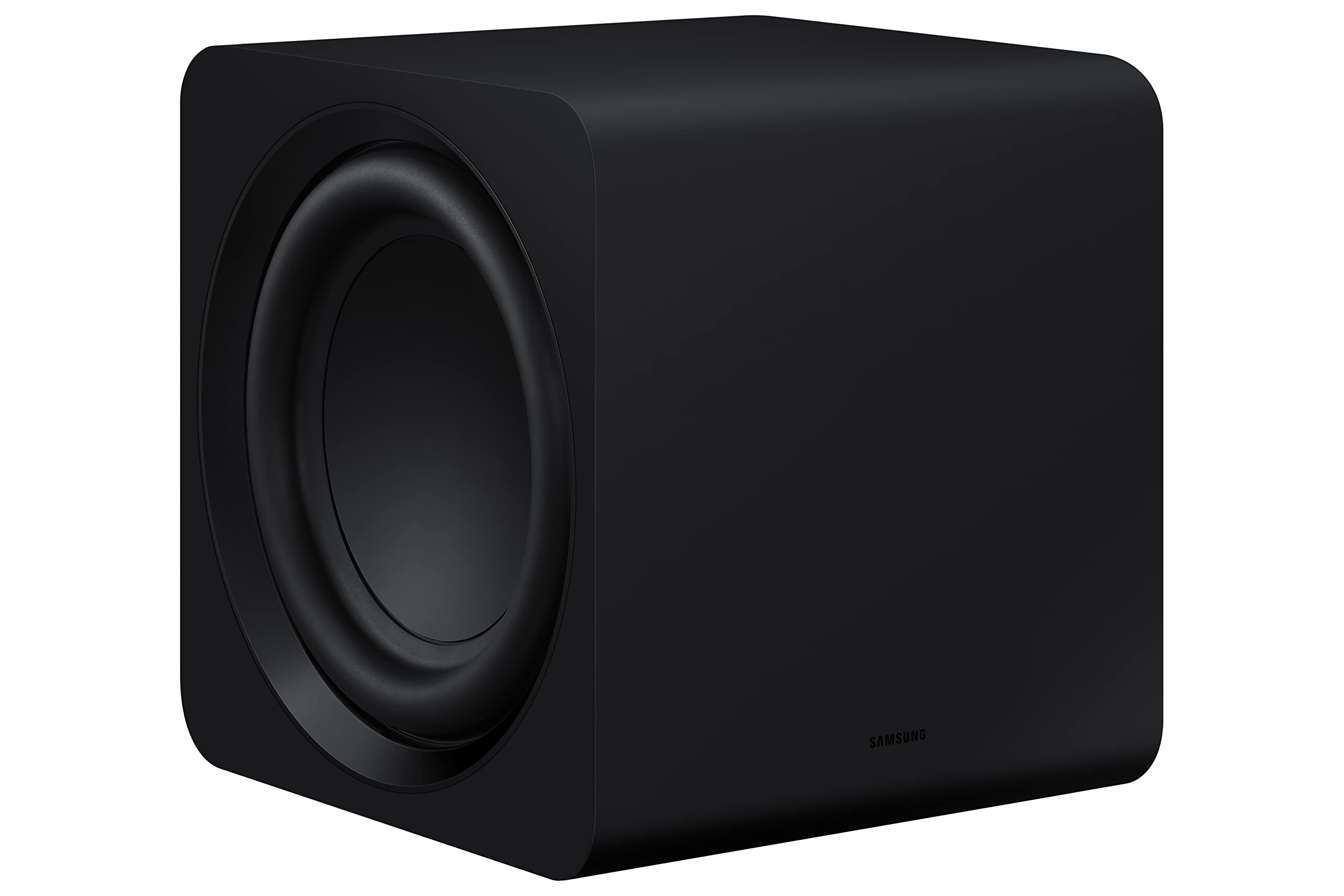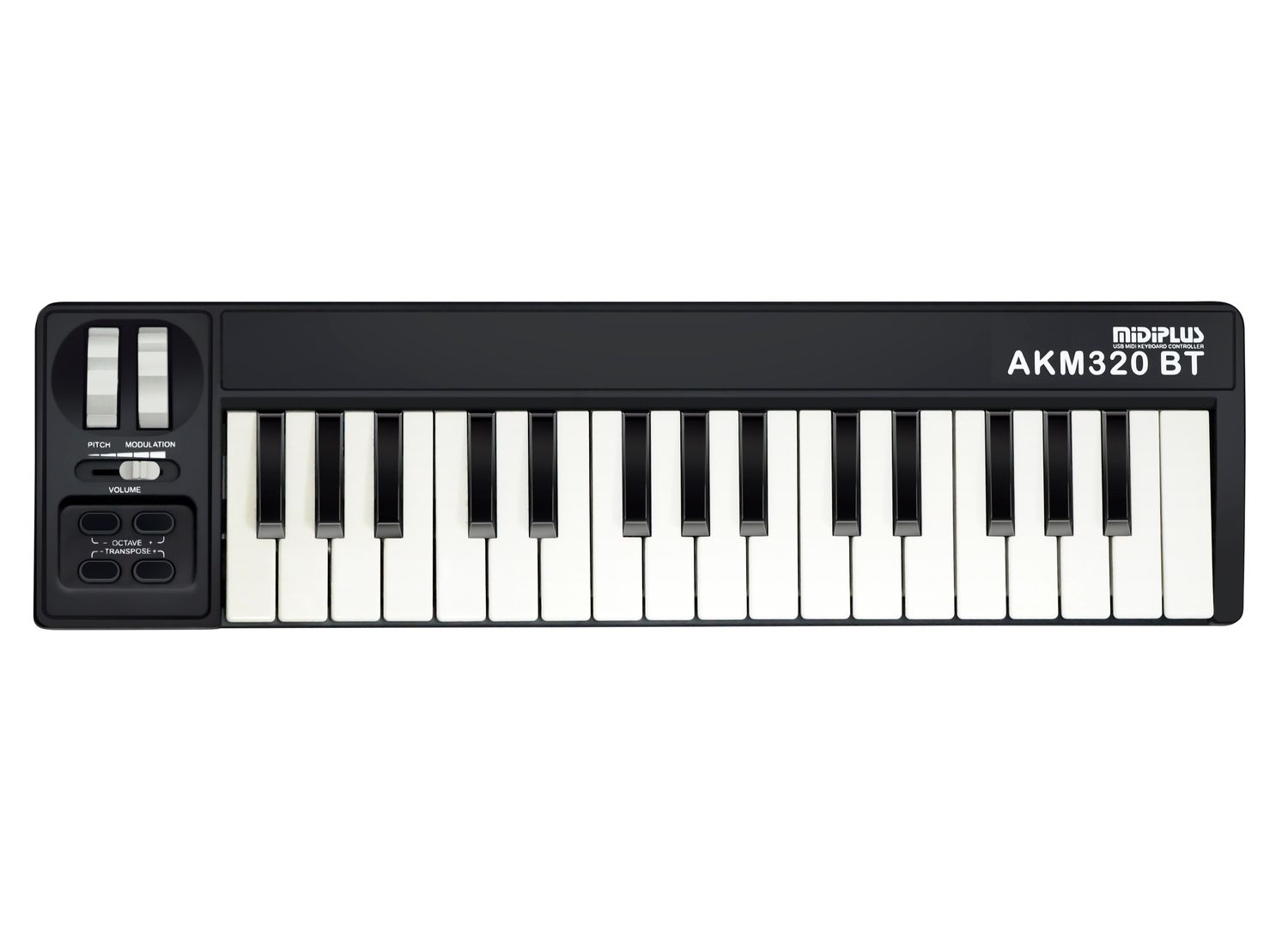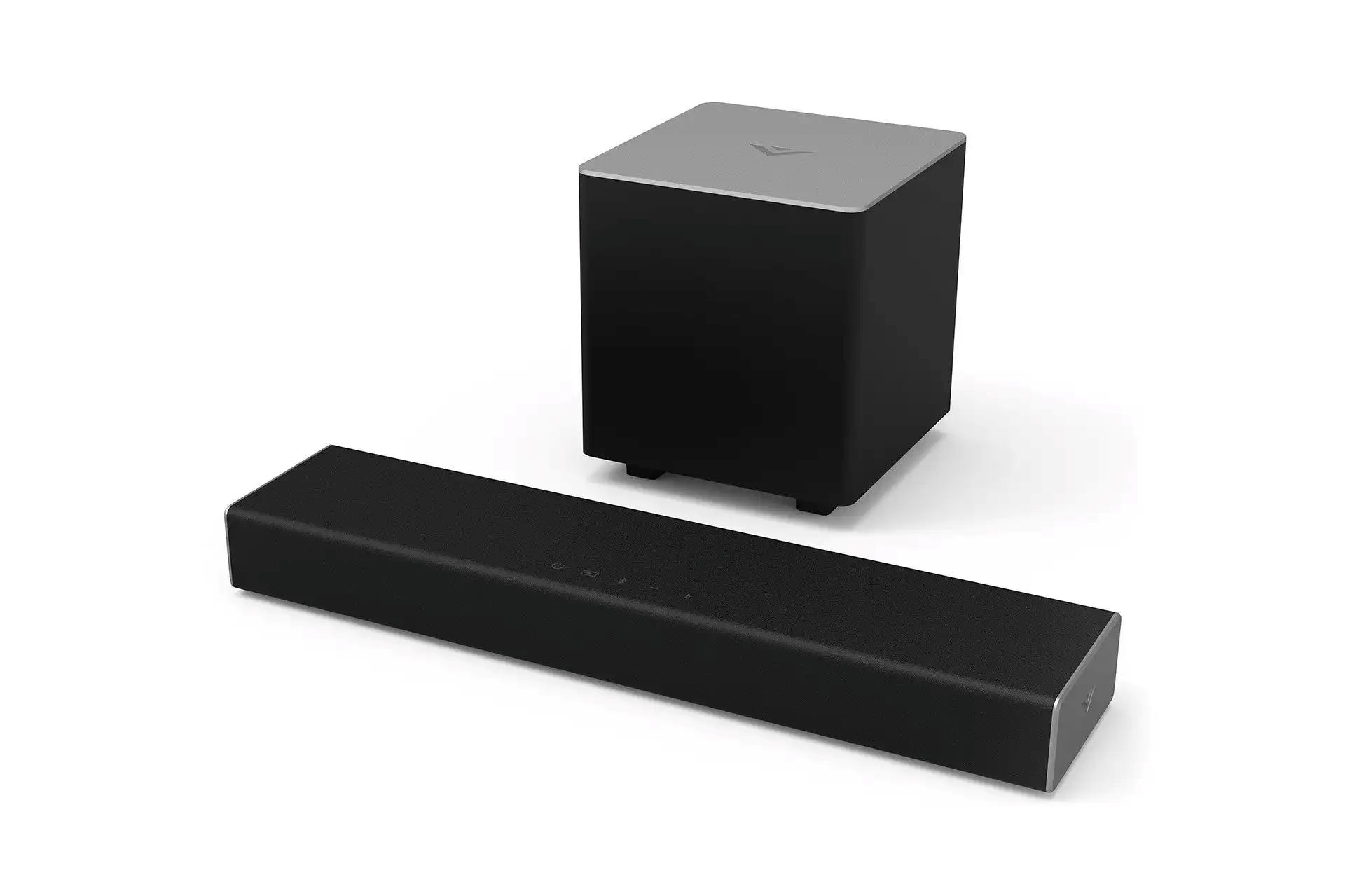Home>Devices & Equipment>Radio>Why Won’t My Car Start But The Radio And Lights Work?


Radio
Why Won’t My Car Start But The Radio And Lights Work?
Modified: January 22, 2024
Discover why your car won't start while the radio and lights still work. Explore common causes and find solutions to get your car running smoothly again.
(Many of the links in this article redirect to a specific reviewed product. Your purchase of these products through affiliate links helps to generate commission for AudioLover.com, at no extra cost. Learn more)
Table of Contents
- Introduction
- Possible Reasons for Car Not Starting
- Battery Issues
- Starter Motor Problems
- Fuel System Troubles
- Ignition System Failure
- Malfunctioning Alternator
- Faulty Spark Plugs
- Clogged Fuel Filter
- Problems with the Engine Control Unit (ECU)
- Faulty Crankshaft Position Sensor
- Issues with the Security System
- Conclusion
Introduction
It’s a frustrating situation: you hop into your car, turn the key in the ignition, and… nothing. Your car won’t start. However, you notice that the radio and lights are all working just fine. So, what could be causing this issue?
There are several possible reasons why your car won’t start but the radio and lights are functioning. It could be related to the battery, the starter motor, the fuel system, the ignition system, or even the security system. In this article, we’ll explore these potential causes in more detail to help you diagnose the problem and get your vehicle back up and running.
Before diving into the possible reasons, it’s important to understand that modern cars are complex machines with various interconnected systems. When one system fails, it can affect other components as well. Therefore, it’s always recommended to seek professional assistance when dealing with car starting issues, especially if you’re not familiar with automotive mechanics.
Possible Reasons for Car Not Starting
When your car refuses to start but the radio and lights are working, it can indicate a specific problem within the vehicle. Here are some potential reasons for this issue:
- Battery Issues: A weak or dead battery is a common culprit for a car not starting. While the battery might have enough power to operate the lights and radio, it may lack the necessary power to turn over the engine. The battery terminals may also be corroded or loose, resulting in a poor connection.
- Starter Motor Problems: The starter motor is responsible for initiating the engine’s combustion cycle. If the starter motor doesn’t receive the necessary electrical current, it won’t be able to crank the engine. This can be due to a faulty solenoid, worn-out brushes, or a damaged starter motor itself.
- Fuel System Troubles: If your car isn’t getting the right amount of fuel, it may not start. Issues such as a clogged fuel filter, a failing fuel pump, or a problem with the fuel injectors can prevent the engine from receiving the proper fuel supply, resulting in a no-start condition.
- Ignition System Failure: The ignition system is responsible for creating a spark to ignite the fuel-air mixture in the engine cylinders. If there’s a fault in the ignition system, such as a faulty ignition coil, distributor, or spark plugs, the engine won’t start even if the other electrical components are functioning.
- Malfunctioning Alternator: While the alternator primarily charges the battery, it also plays a role in providing electrical power to the vehicle’s components when the engine is running. If the alternator is faulty, it may not be producing enough electricity to power the starter motor, resulting in a no-start situation.
- Faulty Spark Plugs: Spark plugs are responsible for igniting the fuel-air mixture in the engine. Worn-out or damaged spark plugs can prevent the engine from starting. Even if the lights and radio work, if the spark plugs aren’t firing correctly, the engine won’t come to life.
- Clogged Fuel Filter: The fuel filter protects the fuel injectors from any debris or contaminants in the fuel system. Over time, it can become clogged, reducing the fuel flow to the engine. This can result in starting issues, even if the radio and lights are working.
- Problems with the Engine Control Unit (ECU): The Engine Control Unit, or ECU, is responsible for managing various engine functions. If the ECU malfunctions or fails, it can prevent the engine from starting. This issue requires professional diagnosis and repairs.
- Faulty Crankshaft Position Sensor: The crankshaft position sensor is responsible for determining the engine’s rotational speed. If this sensor fails, the engine may not start, as the ECU won’t receive the necessary information to initiate the ignition process.
- Issues with the Security System: Some vehicles have a security system that can prevent the engine from starting if it detects unauthorized access attempts or if there’s a fault in the system. In this case, the radio and lights may still work, but the engine won’t turn over.
Keep in mind that this list provides general information on possible reasons for a car not starting when the radio and lights are working. It’s always best to consult with a qualified mechanic to accurately diagnose and resolve the issue.
Battery Issues
One of the most common reasons for a car not starting, while the radio and lights are functioning, is a problem with the battery. While the battery may have enough power to operate the electrical components, it may not have enough power to turn over the engine.
A weak or dead battery can be caused by various factors, such as leaving headlights or interior lights on for an extended period, a faulty charging system, or simply an old battery that needs replacement. Additionally, the battery terminals may become corroded or loose over time, resulting in a poor connection and insufficient power delivery.
To determine if the battery is the culprit, you can perform a few simple tests. Start by checking the battery voltage using a multimeter. A fully charged battery should read around 12.6 volts. If the reading is significantly lower, it indicates a weak battery that needs to be recharged or replaced.
Next, inspect the battery terminals for any signs of corrosion, such as a white or greenish substance. If you notice corrosion, clean the terminals using a battery terminal cleaner or a mixture of baking soda and water. Ensure that the terminals are tightened securely after cleaning.
If you have a jump starter or jumper cables and a second vehicle available, you can try jump-starting your car. This will provide a temporary boost of power from the other vehicle’s battery, allowing you to potentially start your car. If jump-starting is successful, it’s likely that your battery needs to be replaced.
In case jump-starting doesn’t work, or if you suspect a deeper issue with the battery or charging system, it’s advisable to have a professional inspect and test your battery. They can determine if the battery needs replacement or if there are any underlying issues with the charging system that need to be addressed.
Remember, it’s essential to maintain your car’s battery regularly by checking its charge level, keeping the terminals clean, and replacing the battery when necessary to avoid unexpected starting issues. Additionally, if you anticipate long periods of inactivity for your vehicle, consider using a battery maintainer or disconnecting the battery to prevent a complete discharge.
Starter Motor Problems
Another potential reason for your car not starting while the radio and lights are working is a problem with the starter motor. The starter motor is responsible for initiating the engine’s combustion cycle by turning the crankshaft, which starts the engine’s rotation.
If the starter motor is not receiving the necessary electrical current, it won’t be able to crank the engine, resulting in a no-start condition. Several issues can affect the functionality of the starter motor:
- Faulty Solenoid: The solenoid is an integral part of the starter motor, responsible for engaging the starter gear with the engine’s flywheel. If the solenoid fails, it may not transmit the electrical current to the starter motor, preventing it from operating.
- Worn-out Brushes: Starter motors contain brushes that make contact with the armature, supplying electrical current for its operation. Over time, these brushes can become worn out, resulting in poor electrical connection and a failure to start the engine.
- Damaged Starter Motor: The starter motor itself may be damaged due to wear and tear, heat damage, or other factors. If the internal components of the starter motor are not functioning correctly, it won’t be able to generate enough torque to turn the engine.
If you suspect a problem with the starter motor, you can try a few troubleshooting steps. Start by checking the wiring connections to ensure they are secure and free from corrosion. If you notice any loose connections or corrosion, clean and tighten them accordingly.
Next, you can try giving the starter motor a gentle tap with a hammer or a wrench while someone attempts to start the car. Sometimes, the starter motor may get stuck or develop a dead spot, and a gentle tap can temporarily free it up and allow it to engage the flywheel.
If tapping the starter motor doesn’t work, you can also try jump-starting the car. Sometimes, a weak battery can provide enough power for the radio and lights to work but not enough to crank the engine. Jump-starting can provide the necessary boost to start the car.
However, if these steps don’t resolve the issue, it is likely that the starter motor needs replacement or further diagnosis by a professional mechanic. They have the expertise and tools to accurately test the starter motor and its components to determine the exact cause of the problem.
Remember, attempting to fix or replace the starter motor yourself can be challenging, especially if you’re not familiar with automotive electrical systems. It’s always best to seek professional assistance to ensure a proper and safe repair.
Fuel System Troubles
If your car won’t start but the radio and lights are working, it’s possible that there is an issue with the fuel system. The fuel system is responsible for delivering the proper amount of fuel to the engine for combustion. Several problems within the fuel system can prevent the engine from starting:
- Clogged Fuel Filter: Over time, the fuel filter can become clogged with debris and contaminants. A clogged fuel filter restricts the flow of fuel to the engine, preventing it from starting. If your fuel filter hasn’t been replaced in a while, it may be a good idea to have it inspected and replaced if necessary.
- Failing Fuel Pump: The fuel pump is responsible for pumping fuel from the gas tank to the fuel injectors. If the fuel pump is faulty or failing, it may not be delivering enough fuel pressure to start the engine. In this case, the radio and lights may work, but the engine won’t start. A professional mechanic can test the fuel pressure to determine if the fuel pump is the issue.
- Faulty Fuel Injectors: Fuel injectors spray fuel into the engine’s combustion chambers for ignition. If the fuel injectors are clogged, dirty, or malfunctioning, they may not be delivering the proper amount of fuel to the engine. This can result in a no-start condition, even if the other electrical components are working.
- Fuel Contamination: Contaminated fuel, such as water or excessive amounts of dirt, can cause starting issues. Contaminated fuel can prevent the engine from igniting properly, leading to a no-start condition. This problem is more common in cases where the vehicle has been refueled with low-quality or contaminated fuel.
- Fuel Line Issues: Problems with the fuel lines, such as leaks or blockages, can disrupt the flow of fuel to the engine. If fuel is not reaching the engine due to a damaged or blocked fuel line, the car won’t start. In such cases, a professional inspection is necessary to identify and repair any issues with the fuel lines.
If you suspect that a fuel system problem is causing your car not to start, it’s essential to have it addressed by a qualified mechanic. They can perform diagnostic tests, such as checking fuel pressure and inspecting fuel system components, to pinpoint the exact cause of the issue.
Remember, working with the fuel system can be dangerous and should only be done by professionals who have the necessary knowledge and expertise. Trying to fix the problem yourself without proper training can lead to accidents or further damage to the vehicle.
Regular maintenance of the fuel system, such as changing the fuel filter according to the manufacturer’s recommended intervals, using high-quality fuel, and keeping an eye out for any signs of fuel system issues, can help prevent starting problems in the future.
Ignition System Failure
If your car refuses to start but the radio and lights are working, an ignition system failure could be the culprit. The ignition system is responsible for creating a spark to ignite the fuel-air mixture in the engine’s combustion chambers. If there’s an issue within the ignition system, the engine won’t start, regardless of the operation of other electrical components.
There are several components within the ignition system that can fail or malfunction:
- Faulty Ignition Coil: The ignition coil is responsible for converting the battery’s low voltage into the high voltage needed to create a spark. If the ignition coil fails, it won’t generate the necessary voltage, resulting in a no-start condition.
- Defective Distributor: In older vehicles with distributor-based ignition systems, a malfunctioning distributor can prevent the ignition spark from reaching the spark plugs. This can lead to a failure to start the engine. Modern vehicles typically have coil-on-plug ignition systems that eliminate the need for a distributor.
- Worn-out Spark Plugs: Spark plugs play a crucial role in igniting the fuel-air mixture within the engine. Over time, spark plugs can become worn out or fouled, causing misfires or a complete failure to generate a spark. If the spark plugs are not firing correctly, the engine won’t start.
- Defective Ignition Switch: The ignition switch is responsible for activating the electrical components of the ignition system. If the ignition switch is faulty, it may not send the necessary signal to start the engine, resulting in a no-start condition.
- Ignition Control Module Issues: Faulty ignition control modules can cause an intermittent or complete failure of the ignition system, preventing the engine from starting. These modules control the ignition timing and ensure proper spark production.
If you suspect an ignition system failure, there are a few steps you can take to diagnose the problem. Start by checking the ignition system components for visible signs of damage or wear. Look for any loose or corroded connections and ensure they are securely fastened.
Next, you can try replacing the spark plugs with new ones if they are due for replacement. Worn-out or fouled spark plugs are a common cause of ignition system issues. Keep in mind that different vehicles may require specific types of spark plugs, so consult your vehicle’s manual or a trusted mechanic for the correct type.
If these steps don’t resolve the problem, it’s best to have a professional mechanic diagnose and repair the ignition system. They have the expertise and specialized equipment to accurately test the ignition components and determine the exact cause of the failure.
Regular maintenance of the ignition system, including scheduled spark plug replacements, can help prevent starting issues in the future. Additionally, avoiding prolonged cranking of the engine and turning off electrical components when starting the car can reduce the strain on the ignition system.
Malfunctioning Alternator
If your car’s radio and lights are working, but the engine won’t start, a malfunctioning alternator may be the cause. The alternator is responsible for generating electrical power and charging the battery while the engine is running. If the alternator is not functioning correctly, it may not provide enough electricity to power the starter motor, resulting in a no-start condition.
There are a few signs that can indicate a problem with the alternator:
- Dimming Lights: If you notice that the headlights, interior lights, or dashboard lights are dimming or flickering, it could be a sign of an alternator issue. The alternator may not be supplying enough power to the electrical system, causing the lights to dim or fluctuate.
- Warning Light: Some vehicles have a specific warning light on the dashboard that illuminates when there is a problem with the charging system. If you see a battery or charging system warning light, it indicates a potential issue with the alternator.
- Dead Battery: A malfunctioning alternator can result in a drained battery as it fails to recharge it properly while the engine is running. If you’ve recently replaced the battery and are experiencing starting issues, the alternator may be the culprit.
- Burning Smell: In some cases, a failing alternator can emit a burning smell due to overheating. If you notice a distinct burning smell coming from the engine compartment, it’s essential to have the alternator inspected immediately.
If you suspect an issue with the alternator, there are a few steps you can take to confirm the problem. Start by checking the serpentine belt that drives the alternator. Look for any signs of damage or looseness. A broken or loose belt may prevent the alternator from functioning properly.
You can also perform a simple voltage test using a multimeter. With the engine running, connect the multimeter to the battery terminals and check the voltage. A properly functioning alternator should produce a voltage reading between 13.5 and 14.5 volts. If the reading is significantly lower or higher, it indicates an issue with the alternator.
In this case, it is recommended to have your vehicle inspected by a professional mechanic. They will perform a detailed diagnosis of the alternator and its associated components to determine the exact cause of the malfunction. If the alternator is indeed the problem, it will need to be replaced to restore proper charging functionality.
Remember, a malfunctioning alternator can lead to further problems, such as battery drain and electrical component failure. It’s crucial to address alternator issues promptly to avoid further damage and ensure the reliability of your vehicle’s electrical system.
Faulty Spark Plugs
If your car’s radio and lights are working but the engine won’t start, one possible culprit could be faulty spark plugs. Spark plugs play a critical role in igniting the fuel-air mixture in the engine’s combustion chambers. If the spark plugs are worn out, fouled, or not functioning correctly, they may prevent the engine from starting.
There are several issues that can occur with spark plugs:
- Worn-out Electrodes: Over time, the electrodes of the spark plugs can wear down, resulting in a weaker or inconsistent spark. This can make it difficult for the spark plugs to ignite the fuel-air mixture, leading to starting problems.
- Carbon Deposits: Carbon deposits can accumulate on the spark plugs over time due to incomplete combustion. These deposits can hinder the spark production and interfere with the spark plug’s ability to ignite the fuel-air mixture properly.
- Fouling: Spark plugs can become fouled by oil, fuel additives, or other contaminants. Fouling occurs when the spark plugs are unable to burn off these substances, leading to poor spark production and starting issues.
- Incorrect Gap: Each spark plug has a specific electrode gap that determines the spark’s intensity. If the gap is too narrow or too wide, it can result in weak spark production, making it difficult for the spark plugs to initiate combustion.
If you suspect faulty spark plugs, you can perform a visual inspection to check for signs of wear, carbon deposits, or fouling. If you notice any abnormalities, the spark plugs may need to be replaced. Keep in mind that the number of spark plugs in your car will depend on the number of cylinders in the engine.
Replacing spark plugs can be a relatively straightforward process, but it’s essential to use the correct type and gap size for your specific vehicle. Consult your vehicle’s manual or a trusted mechanic for the appropriate spark plugs.
In some cases, spark plug issues may indicate underlying engine problems. If the spark plugs show severe damage or are consistently fouling, it may be necessary to have the engine inspected for further troubleshooting and potential repairs.
Remember to follow proper safety procedures when working with spark plugs, such as disconnecting the battery and allowing the engine to cool before attempting any maintenance. If you are unsure about replacing spark plugs yourself, it’s always best to consult with a professional mechanic.
Regular maintenance of the spark plugs, including periodic replacement according to the manufacturer’s recommendations, can help prevent starting issues and optimize engine performance.
Clogged Fuel Filter
If your car’s radio and lights are functioning but the engine won’t start, there’s a possibility that the fuel filter is clogged. The fuel filter’s primary function is to prevent contaminants, such as dirt, rust, and debris, from reaching the engine. Over time, the filter can become clogged, restricting the flow of fuel and causing starting issues.
When the fuel filter is clogged, the engine may not be receiving the proper amount of fuel it needs to start and run effectively. A clogged fuel filter can lead to various problems, including fuel starvation and inadequate fuel pressure.
Here are a few signs that may indicate a clogged fuel filter:
- Difficulty Starting: A clogged fuel filter can result in a slow or prolonged cranking process when starting the engine. This is because the engine is not receiving the necessary fuel flow to ignite properly.
- Engine Stalling: As the fuel filter becomes more congested with contaminants, it can impede the fuel flow. This can lead to engine stalling, particularly during acceleration or when the engine is under load.
- Decreased Engine Performance: A clogged fuel filter can negatively impact the engine’s performance. You may notice a lack of power, sluggish acceleration, or a decrease in fuel efficiency.
- Engine Misfires: In some cases, a clogged fuel filter can contribute to engine misfires or rough idling. The restricted fuel flow can result in an improper fuel-air mixture and lead to engine misfires.
- Check Engine Light: In more severe cases, a clogged fuel filter may trigger the check engine light on your dashboard. This indicator is a warning that there is a problem within the fuel system that needs attention.
If you suspect a clogged fuel filter, it’s essential to have it inspected and replaced if necessary. The fuel filter is typically located along the fuel lines, either within the fuel tank or in-line between the tank and the engine. The location and replacement procedure can vary depending on the make and model of your vehicle.
It is generally recommended to have the fuel filter replaced according to the manufacturer’s recommended maintenance schedule. However, if you are experiencing starting or performance issues and suspect the fuel filter to be the cause, it’s best to consult a professional mechanic for diagnosis and replacement.
Attempting to replace the fuel filter yourself can be complicated, depending on the vehicle’s configuration and access. Moreover, working with fuel-related components can be dangerous if proper precautions are not taken.
Regular maintenance and replacing the fuel filter as recommended can help prevent starting issues and ensure the smooth operation of your vehicle’s fuel system.
Problems with the Engine Control Unit (ECU)
If your car’s radio and lights are working fine but the engine won’t start, there’s a possibility that the Engine Control Unit (ECU) is experiencing issues. The ECU, also known as the engine control module or engine control computer, is a vital component of modern vehicles. It manages and controls various engine functions, including fuel injection, ignition timing, and emissions.
Several problems with the ECU can prevent the engine from starting:
- Software Malfunction: The ECU relies on complex software algorithms to regulate engine performance. If there’s a software glitch or corruption in the ECU’s program, it may cause starting issues. In such cases, reprogramming or updating the ECU software may be necessary.
- Electrical or Wiring Problems: Faulty electrical connections or damaged wiring harnesses can affect the ECU’s ability to communicate with the engine’s components. This can result in starting issues as the ECU may not receive or transmit the necessary signals for starting the engine.
- Sensor Malfunctions: The ECU relies on input from various sensors, such as the crankshaft position sensor, camshaft position sensor, and oxygen sensor, to make critical decisions about fuel delivery and ignition timing. If any of these sensors fail or provide inaccurate readings, it can prevent the engine from starting.
- ECU Failure: In rare cases, the ECU itself may fail due to internal component failure or damage. If the ECU fails, it may not be able to send the necessary commands to start the engine and regulate its functions.
If you suspect a problem with the ECU, it’s best to have it diagnosed and repaired by a professional mechanic or an automotive electronics specialist. They can use specialized diagnostic tools to communicate with the ECU and retrieve error codes to determine the underlying issue. Additionally, they can perform any necessary repairs or reprogramming of the ECU.
It’s important to note that working on the ECU or attempting to reprogram it requires specialized knowledge and equipment. It’s not recommended for inexperienced individuals to attempt these repairs on their own, as improper handling can lead to further damage to the vehicle or potential security issues.
Regular maintenance, such as keeping the electrical connections clean and secure, can help minimize the chances of ECU-related starting problems. Additionally, promptly addressing any check engine lights or warning indicators on the dashboard can help catch and resolve potential ECU issues before they become more severe.
Faulty Crankshaft Position Sensor
If your car’s radio and lights are working but the engine won’t start, a faulty crankshaft position sensor could be the culprit. The crankshaft position sensor is a vital component of the engine’s ignition system. It monitors the position and rotational speed of the crankshaft, providing crucial information to the Engine Control Unit (ECU) to determine the precise timing for fuel injection and ignition.
If the crankshaft position sensor fails or malfunctions, it can prevent the engine from starting. Here are a few signs that may indicate a faulty crankshaft position sensor:
- No Start Condition: When the crankshaft position sensor fails, the ECU may not receive accurate information about the crankshaft’s position or rotational speed. Consequently, the ECU may not be able to determine the correct fuel injection and ignition timing, resulting in a no-start condition.
- Intermittent Stalling: A failing crankshaft position sensor may lead to intermittent stalling while driving. The sensor’s inaccuracies can cause the ECU to miscalculate the timing, resulting in engine stalling at random intervals.
- Poor or Rough Engine Performance: A faulty crankshaft position sensor may produce erratic signals, leading to incorrect fuel injection and ignition timing. This can result in poor engine performance, including rough idling, misfires, and reduced power.
- Difficulty in Starting: In some cases, a failing crankshaft position sensor may cause difficulty in starting the engine. You may experience extended cranking times or multiple attempts before the engine finally starts.
- Check Engine Light: A malfunctioning crankshaft position sensor can trigger the check engine light on your vehicle’s dashboard. If this light illuminates alongside other starting or performance issues, it’s worth exploring the possibility of a faulty sensor.
If you suspect an issue with the crankshaft position sensor, it’s essential to have it inspected and replaced if necessary. The sensor is typically located near the crankshaft pulley or timing cover, but its exact location can vary depending on the vehicle’s make and model.
Replacing the crankshaft position sensor is a task that generally requires mechanical expertise and knowledge of the engine components. It’s recommended to seek the assistance of a professional mechanic to ensure the sensor is replaced correctly and any necessary adjustments or calibrations are performed.
Regular maintenance of the vehicle, such as scheduled inspections and addressing any warning lights or unusual engine behavior promptly, can help catch and rectify crankshaft position sensor issues before they lead to complete engine failure or more severe starting problems.
Issues with the Security System
If your car’s radio and lights are functioning, but the engine won’t start, there may be issues with the security system. Many modern vehicles are equipped with advanced security systems designed to deter theft and unauthorized access. However, these systems can occasionally cause starting problems if they detect a potential security threat. Here are a few potential issues with the security system that can prevent the engine from starting:
- Key Fob Malfunction: The key fob or remote control that you use to lock/unlock the car may experience a malfunction. If the security system fails to recognize the key fob, it may trigger an anti-theft feature that prevents the engine from starting.
- Immobilizer System Fault: Some vehicles are equipped with an immobilizer system that requires a specific electronic code from the key fob to start the engine. If the immobilizer system malfunctions or doesn’t recognize the code from the key fob, it can prevent the engine from starting.
- Malfunctioning Ignition Switch: The ignition switch is a component of the security system that communicates with the ECU. If the ignition switch malfunctions or fails, it may prevent the engine from starting, even if the radio and lights work.
- Weak or Dead Battery: Although the radio and lights may be functioning fine, a weak or dead battery can still affect the security system. If the battery voltage is low, the security system may not receive the necessary power to authenticate the key fob, triggering a no-start condition.
- Faulty Door or Hood Switch: The security system relies on door and hood switches to detect unauthorized entry. If any of these switches are faulty or not functioning correctly, the security system may believe that there is a security breach and prevent the engine from starting.
If you suspect an issue with the security system, there are a few steps you can take as a starting point. Try using the spare key fob, as the primary fob may have a depleted battery or a malfunction. Check the battery level of the key fob and replace it if necessary. Additionally, ensure that all doors and the hood are closed securely to eliminate any faulty switch concerns.
If the problem persists, it’s best to consult with a professional mechanic or contact the manufacturer’s dealership. They have the expertise and diagnostic tools to identify and resolve security system-related issues.
While it’s frustrating to encounter starting issues related to the security system, it’s essential to remember that these features are designed to protect your vehicle. Regular maintenance, such as keeping the key fob batteries fresh and inspecting door and hood switches, can help prevent potential security system malfunctions.
Conclusion
Experiencing a car that won’t start while the radio and lights are working can be frustrating and perplexing. However, understanding the possible reasons for this issue can help you troubleshoot and resolve the problem more effectively.
In this article, we explored ten potential causes for a car not starting but the radio and lights functioning. We discussed issues such as battery problems, starter motor malfunctions, fuel system troubles, ignition system failures, alternator issues, faulty spark plugs, clogged fuel filters, problems with the Engine Control Unit (ECU), faulty crankshaft position sensors, and security system complications.
It’s crucial to remember that diagnosing and repairing car starting issues can be complex and may require the expertise of a professional mechanic. They have the knowledge, experience, and necessary diagnostic tools to accurately identify the root cause of the problem and provide appropriate solutions.
Regular vehicle maintenance, including battery checks, spark plug replacements, fuel filter changes, and inspections of various systems, can help prevent starting issues from occurring. Additionally, addressing warning lights and unusual symptoms promptly can help avoid more significant problems that can affect the starting process.
If you encounter a situation where your car won’t start but the radio and lights are operational, it’s best to remain calm and take the necessary steps to diagnose and resolve the issue. By understanding the potential causes outlined in this article and seeking professional assistance when needed, you can overcome starting problems and get your car back on the road again.











